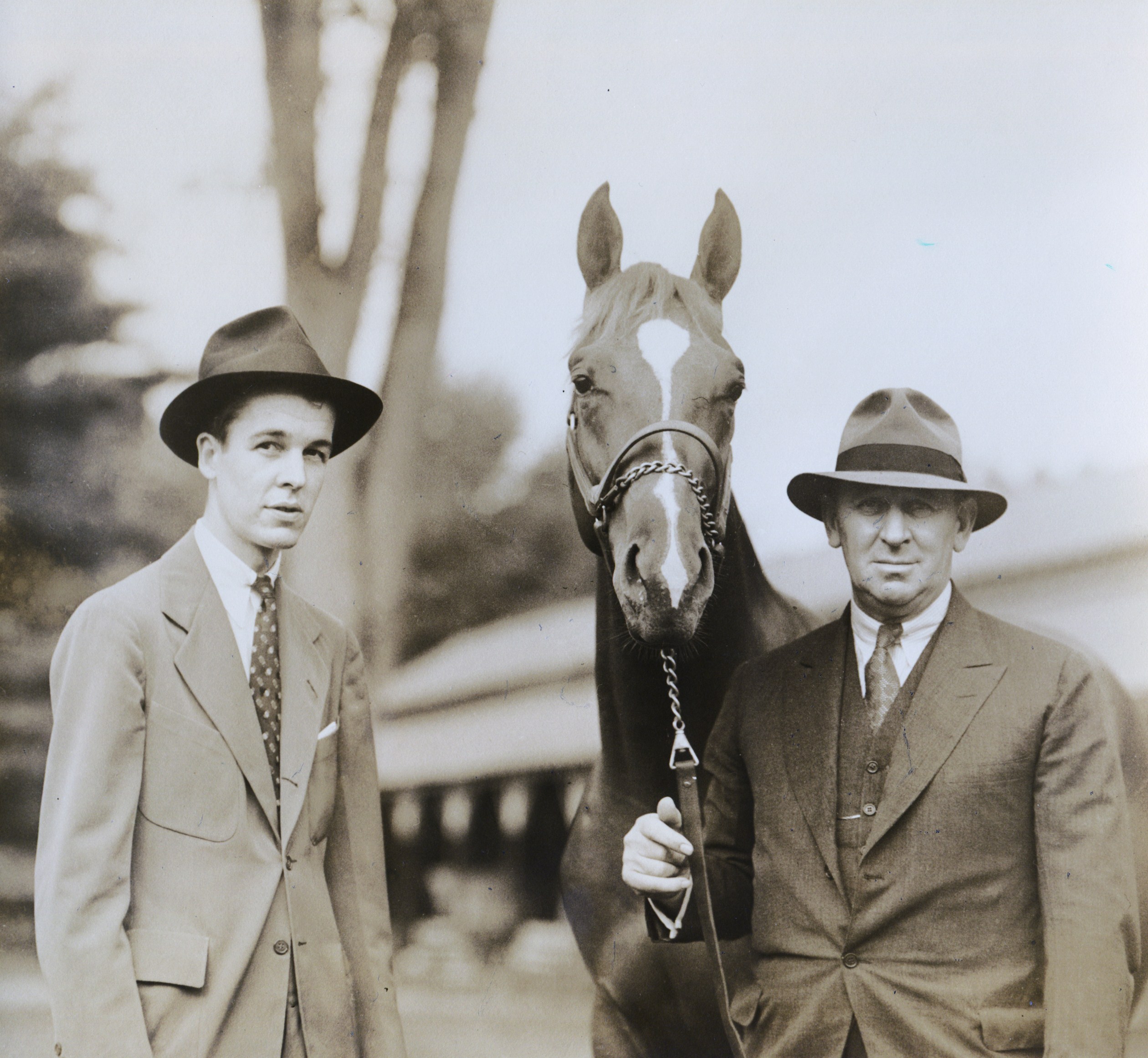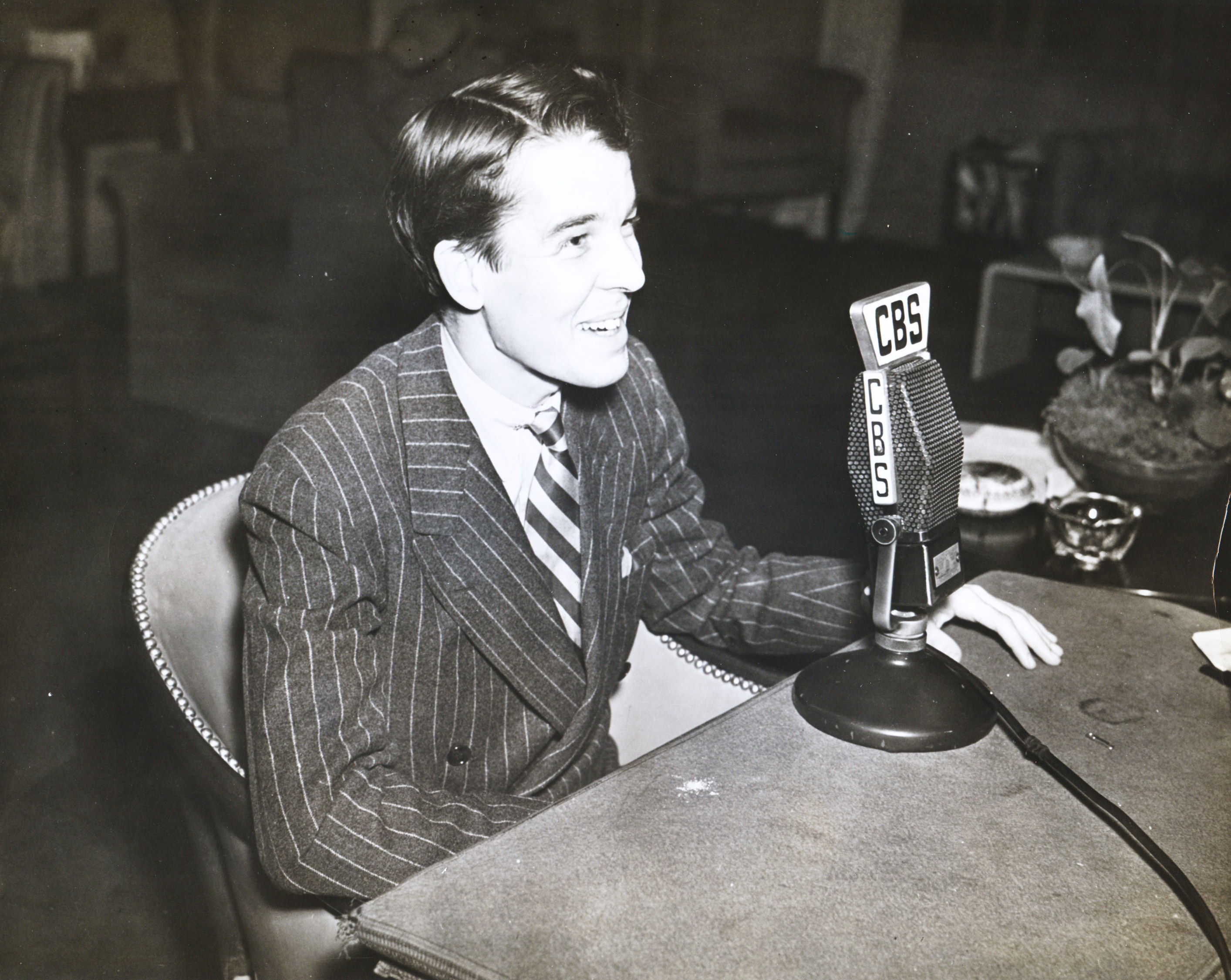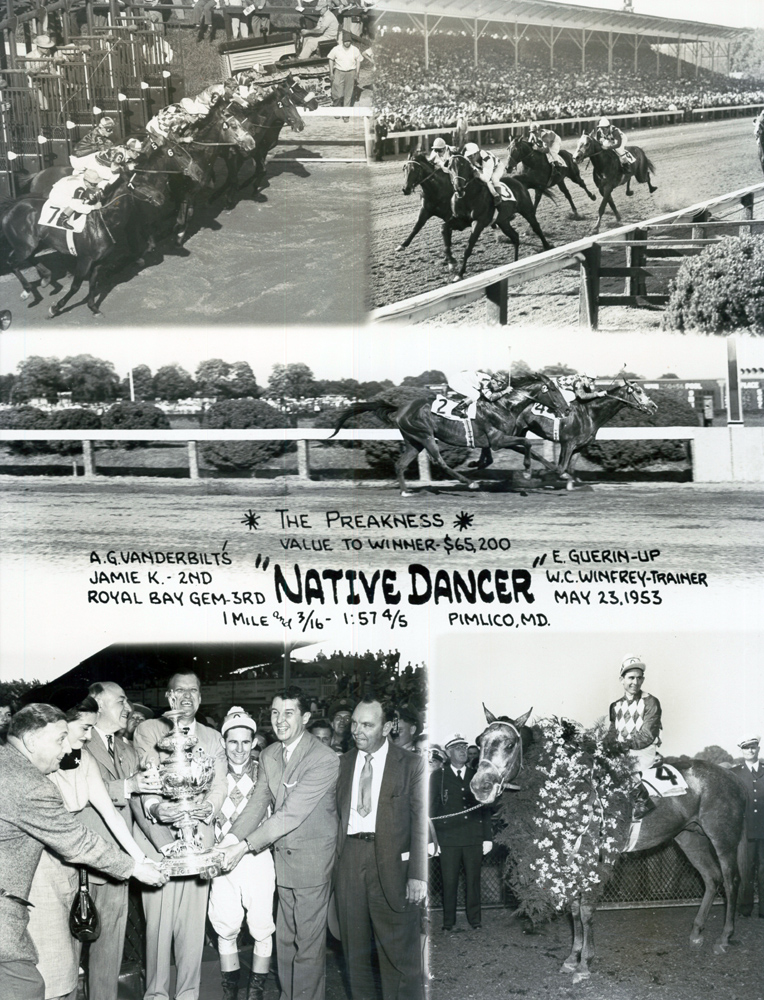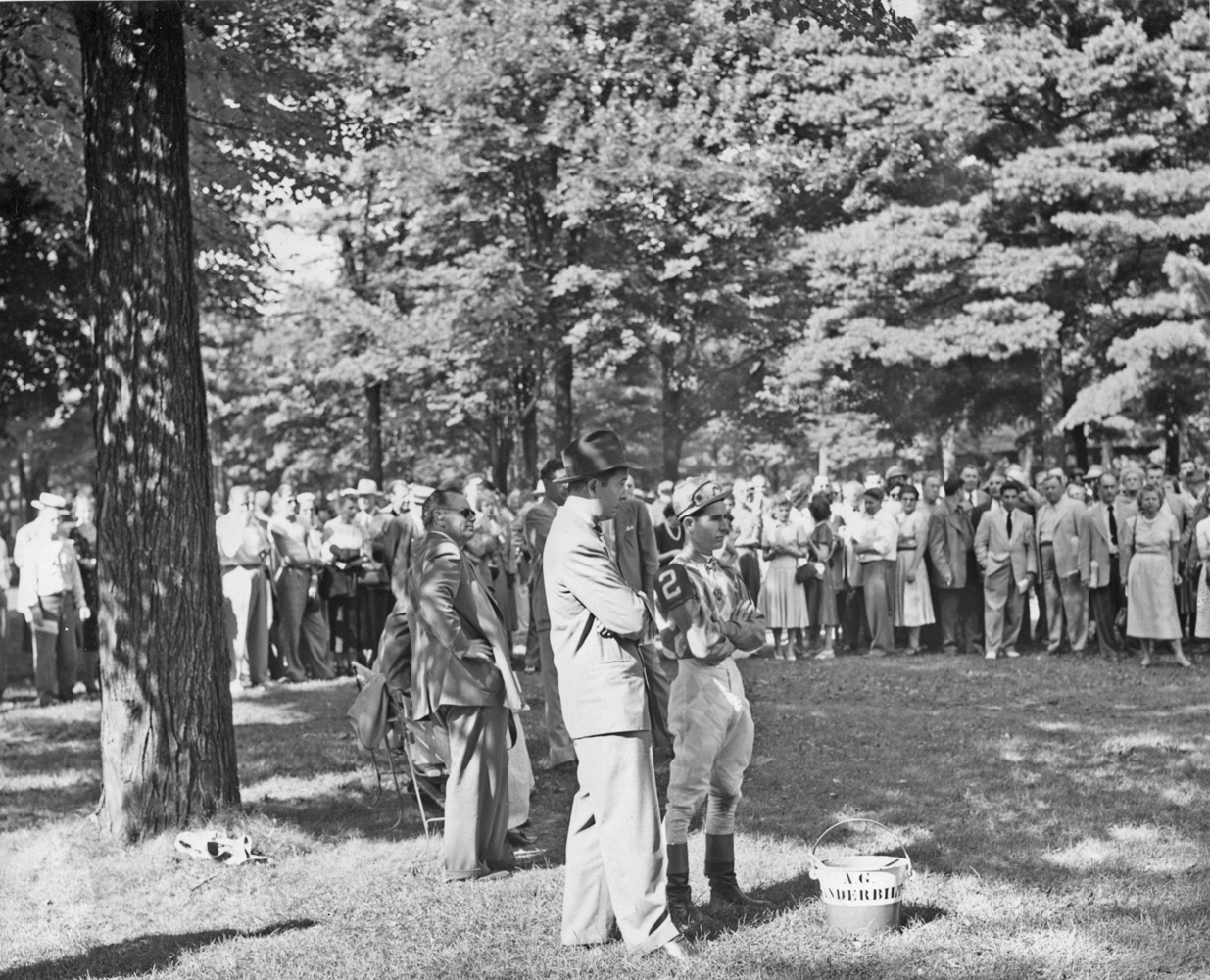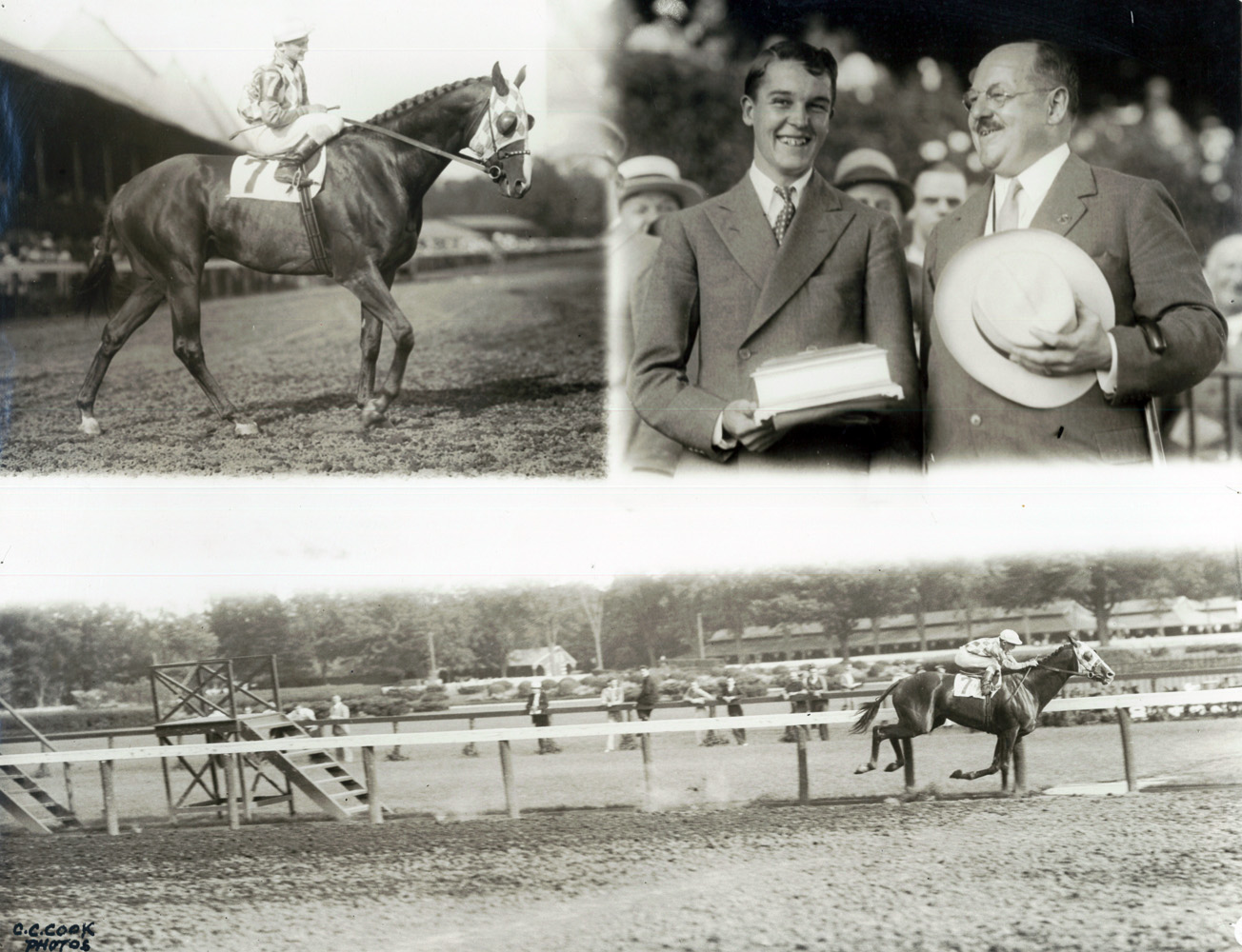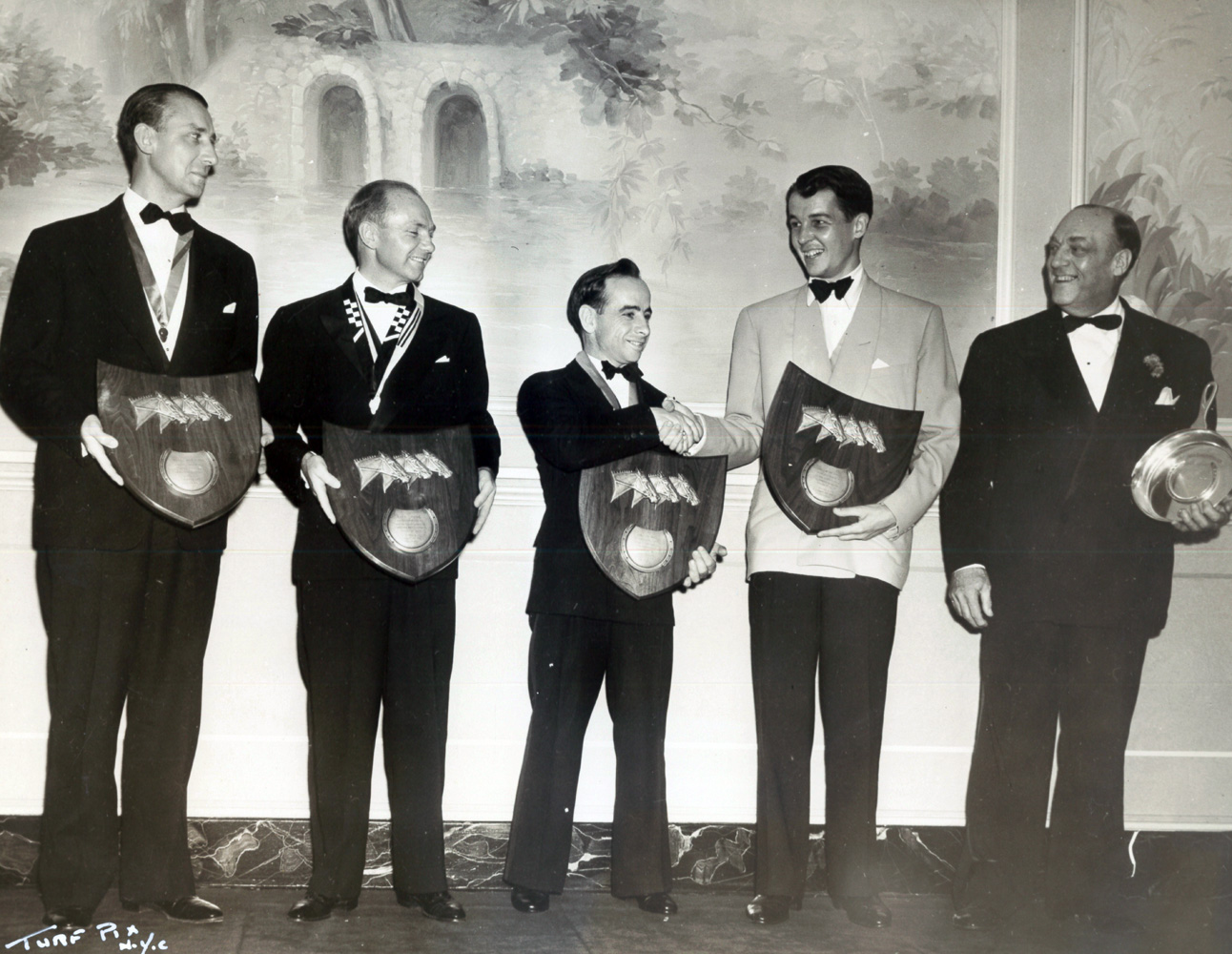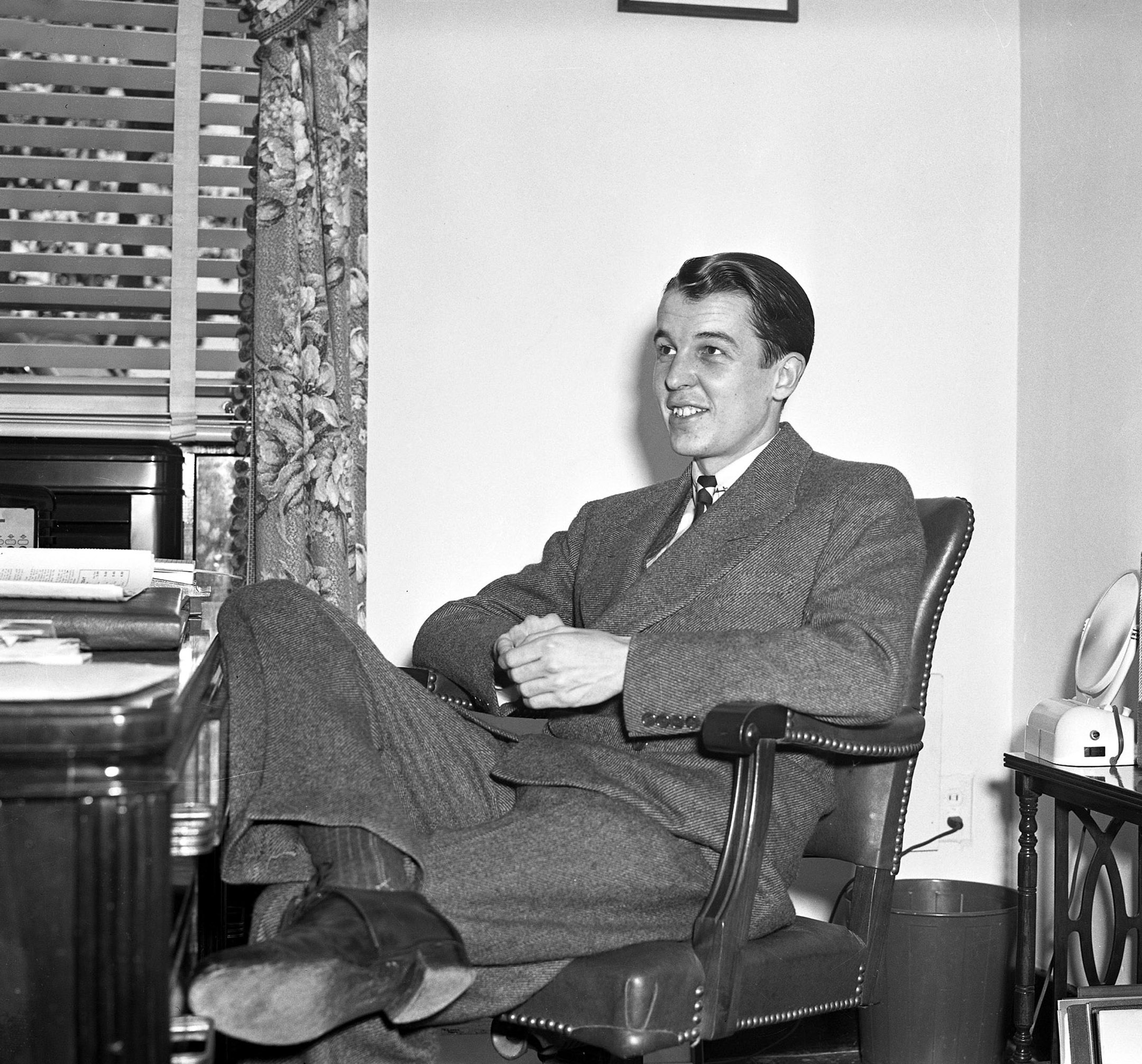Alfred G. Vanderbilt
For seven decades of the 20th century, Alfred Vanderbilt contributed to thoroughbred racing in numerous ways that benefited the sport.
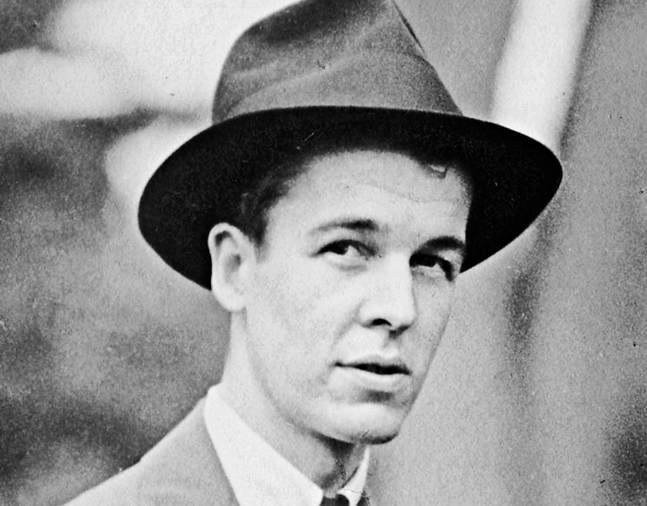
2015
Sept. 12, 1912, London, England
Nov. 12, 1999, Brookville, New York
Biography
For seven decades of the 20th century, Alfred Vanderbilt contributed to thoroughbred racing in numerous ways that benefited the sport.
Named for his father, who died in the sinking of the Lusitania in 1915, Vanderbilt was born Sept. 22, 1912, in London into one of the wealthiest families in the world. Vanderbilt’s great-great grandfather was railroad and shipping magnate Commodore Cornelius Vanderbilt.
Vanderbilt was raised in Lennox, Massachusetts, by his mother, Margaret Emerson, daughter of Bromo-Seltzer inventor Isaac Emerson. It was Emerson who built the Maryland farm that became Sagamore, which young Vanderbilt inherited on his 21st birthday in 1933.
Under Vanderbilt’s direction, Sagamore evolved into a legendary breeding and racing operation. The anchor of that legacy was Discovery, a Vanderbilt purchase who, fittingly, was the first handicap champion to win such honors when formal voting began in 1936. As a 5-year-old, the son of Display won the San Carlos at Santa Anita under 130 pounds, the Brooklyn at Aqueduct under 136 pounds, and the Wilson and Whitney at Saratoga under 126 pounds. Discovery carried 130 or more pounds on 20 occasions, his highest winning impost coming in at 139 pounds in the Merchants’ and Citizens’ Handicap at Saratoga in 1935. He won 22 stakes races, including the Whitney and Brooklyn three times each in succession (1934, 1935, 1936) and was elected to the Hall of Fame in 1969.
Retired to Sagamore Farm, Discovery sired 25 stakes winners, one of which was the filly Miss Disco, bred by Vanderbilt. She became the mother of Bold Ruler, sire of Triple Crown winner Secretariat and one of the greatest stallions of the 20th century, whose line survived through Hall of Famer A.P. Indy, the son of Triple Crown winner Seattle Slew.
At this time, while in his 20s, Vanderbilt became a director of Pimlico, and worked to bring about the famous match race between Seabiscuit and Triple Crown winner War Admiral on Nov. 1, 1938. The Pimlico Special resulted in a four-length victory by Seabiscuit.
At Pimlico, Vanderbilt enhanced fan interest in the Preakness Stakes with numerous promotions, some of which rankled racing’s old guard. It was the beginning of a Vanderbilt tilt toward the average fan, wanting that fan to feel appreciated and to be thanked for his or her support of an endeavor that he always considered to be a sport first and an industry second. He worked toward that goal for his entire life in racing.
In 1940, Vanderbilt became president of the Westchester Racing Association, the operator of Belmont Park, and helped bring the pari-mutuel era to New York, which began at Jamaica that spring. He then left racing to serve his country as a PT boat commander in the Pacific during World War II.
Along the way, Vanderbilt and Sagamore Farm were turning out good racehorses, with his first stakes winner being Speed to Spare, a foal of 1933.
When it came to naming his horses, Vanderbilt was in a class by himself. He took delight in slipping his sense of humor into the registry with names like Savage, Conniver, and Next Move. Savage was by Polymelian-Wild Woman (Wild Air), while Conniver was by Discovery—The Schemer (Challenger II). Champion 3-year-old filly Next Move was by Bull Lea—Now What (Chance Play).
Vanderbilt’s thoroughbred masterpiece was the immortal Native Dancer, a foal of 1950 by Polynesian—Geisha (Discovery). It is part of racing lore that the only race Native Dancer lost in 22 starts was the Kentucky Derby of 1953, and that by a scant, diminishing head after a rough trip. If that margin was reversed, one wonders where Native Dancer would be placed on the periodic expert rankings of the greatest horses in North American history.
Native Dancer won four stakes in 26 days as a 2-year-old at Saratoga: the Flash, Special, Grand Union, and Hopeful. His other major victories came in the Futurity, Gotham, Wood Memorial, Withers, Preakness, Belmont, Dwyer, Arlington Classic, Travers, American Derby, and Metropolitan.
“Basically, in the 1930s you could buy a pretty good horse at a reasonable price,” Vanderbilt recalled. “I was able to acquire a filly named Miyako, for, I believe, $10,000 or so. She was a stakes winner and when I bred her to Discovery she produced Geisha, who was a chestnut of no particular ability. But when bred to Polynesian, we came up with Native Dancer.
“I liked Polynesian and I thought he faced some obstacles in his career. He had something to prove and he did with Native Dancer. I didn’t do one thing differently with Native Dancer’s breeding than any of my others at Sagamore. This was a lucky occurrence which I am very happy about.”
Lucky or not, this mating was one of the most influential of the 20th century.
Native Dancer sired Natalma, who in 1961 produced Kentucky Derby and Preakness winner Northern Dancer, who went on to international fame as the sire of such stallions as Nijinsky II, Danzig, Nureyev, and Sadler’s Wells. Native Dancer also sired Raise a Native, born the same year as Northern Dancer and the champion 2-year-old colt of 1963. Raise a Native went on to sire the outstanding stallions Mr. Prospector, Exclusive Native (sire of Affirmed), and Alydar.
In addition to Discovery and Native Dancer, Vanderbilt owned and/or bred Now What, champion 2-year-old filly of 1939; Petrify, champion 2-year-old filly of 1941; Bed O’ Roses, champion 2-year-old filly of 1949 and champion older female of 1951; and Next Move, champion 3-year-old filly of 1950 and champion older female of 1952.
Along with his tenure as president of Belmont Park, Vanderbilt was also chairman of the New York Racing Association from 1971 through 1975. His association with New York racing coincided with decades of eastern greatness, which was no coincidence.
Vanderbilt attended morning workouts on a daily basis until the day he died, Nov. 12, 1999.
During his final years, with his eyesight failing, Vanderbilt nonetheless made sure to be present to mingle with friends and fans, talking about the serious issues of the day, whether on the backstretch or in the paddock. He cared deeply about the future of New York racing, insisting in the face of increasing political hostility late in the 20th century, that Aqueduct, Belmont, and Saratoga should remain privately owned.
Although his championship days were behind him, Vanderbilt enjoyed a glorious moment in 1996 when his Traitor won the Grade 1 Futurity at Belmont Park. It was the final addition to a list of coveted trophies that Vanderbilt won, including the Spinaway, Matron, Coaching Club American Oaks, Beldame, Metropolitan, Whitney, Brooklyn, and Lawrence Realization, among many others.
Achievements
Eclipse Award of Merit — 1994
North America's leading owner in earnings — 1935
Triple Crown Highlights
Won the 1953 Preakness Stakes — Native Dancer
Won the 1953 Belmont Stakes — Native Dancer
Other Highlights
Bred 77 stakes winners
Media
